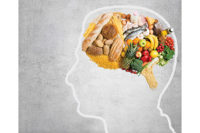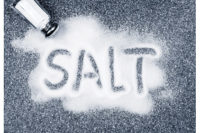For weight maintenance, the common belief is that calories in should equal calories out. For weight loss, calories in should be less than calories out. Sounds simple, right?
While these principles might appear sound to the average grade school student, the details around them sometimes feel anything but. I don’t have to remind you that there is an ongoing—and sometimes bitter—debate in the United States about who is responsible for causing, and subsequently solving, the obesity crisis. I can’t begin to appropriately address this question here, but I can shine some light on the strides being made by the industry and the educational resources available to consumers.
With respect to industry initiatives, the food industry has made tremendous strides in reducing calories in the U.S. food supply. This past September, the Healthy Weight Commitment Foundation (HWCF)—a national, multiyear effort aimed at reducing obesity—announced its 16 member organizations collectively reduced calories across the food supply by 6.4 trillion between 2007 and 2012. This is more than quadruple the group’s goal of reducing calories on the market by 1.5 trillion in time for 2015.
This accomplishment yields rewards for both consumers and the industry. When this announcement was made, HWCF noted that this reduction translated to 78 calories per person per day. Although this may sound small, keep in mind that just 100 calories each day (whether surplus or deficit) can be the difference between a 10-pound weight gain or loss per year. Furthermore, research has shown that better-for-you, lower-calorie foods and beverages also drive sales; companies with portfolios stocked with these products had a healthier bottom line, making product improvements a win-win for everyone (“Lower-Calories Foods: It’s Just Good for Business,” Hudson Institute, Obesity Solutions Initiative, February 2013).
With this acknowledgment, I would be remiss if I did not also discuss the power consumers have to make healthful choices, especially in light of all of the better-for-you options currently on the market. As already mentioned, calorie balance is the key equation for maintaining a healthy weight, and education coupled with personal choice are the guiding stars consumers can use to navigate today’s food environment to find their own personal balance.
I reinforce the need for education for a host of reasons. One of the most compelling of these is the unfortunate truth that many consumers grossly underestimate the calories they consume. Some research indicates consumers underestimate caloric intake by as much as 50 percent (“Expert: Many Underestimate Calories,” CBS News, Nov. 16, 2007). This is a sobering number when you consider what a compelling difference that mere 100 calories a day can make.
At the Grain Foods Foundation, we are a proud part of some of the key initiatives shaping the calorie balance conversation. Since 2012, GFF has been a member of the MyPlate National Strategic Partnership and coordinated with other members of the Grain Chain (AIB International, Grains for Health Foundation, Independent Bakers Association, National Association of Wheat Growers, National Pasta Association, North American Millers’ Association, USA Rice Federation and Wheat Foods Council) to produce educational videos and support the MyPlate messages around making healthful choices.
GFF is also a member of The Dietary Guidelines Alliance and Back to Balance Coalition. Over the past year, our team worked with the alliance to promote the “It’s All About You” Toolkit, a resource for individuals and families interested in taking steps to find the right balance of food intake and physical activity. This toolkit is available in English and Spanish.
While achieving calorie balance is the simplest equation for weight maintenance and creating a calorie deficit the formula for weight loss, there are other factors at play. As an industry, we must continue to collaborate on not only educating the public about the relationship between caloric intake and weight control, but also on facilitating a food environment that makes the right choice the easy choice. By linking arms across the food system, we can all participate in laying the groundwork for a healthier American population.






